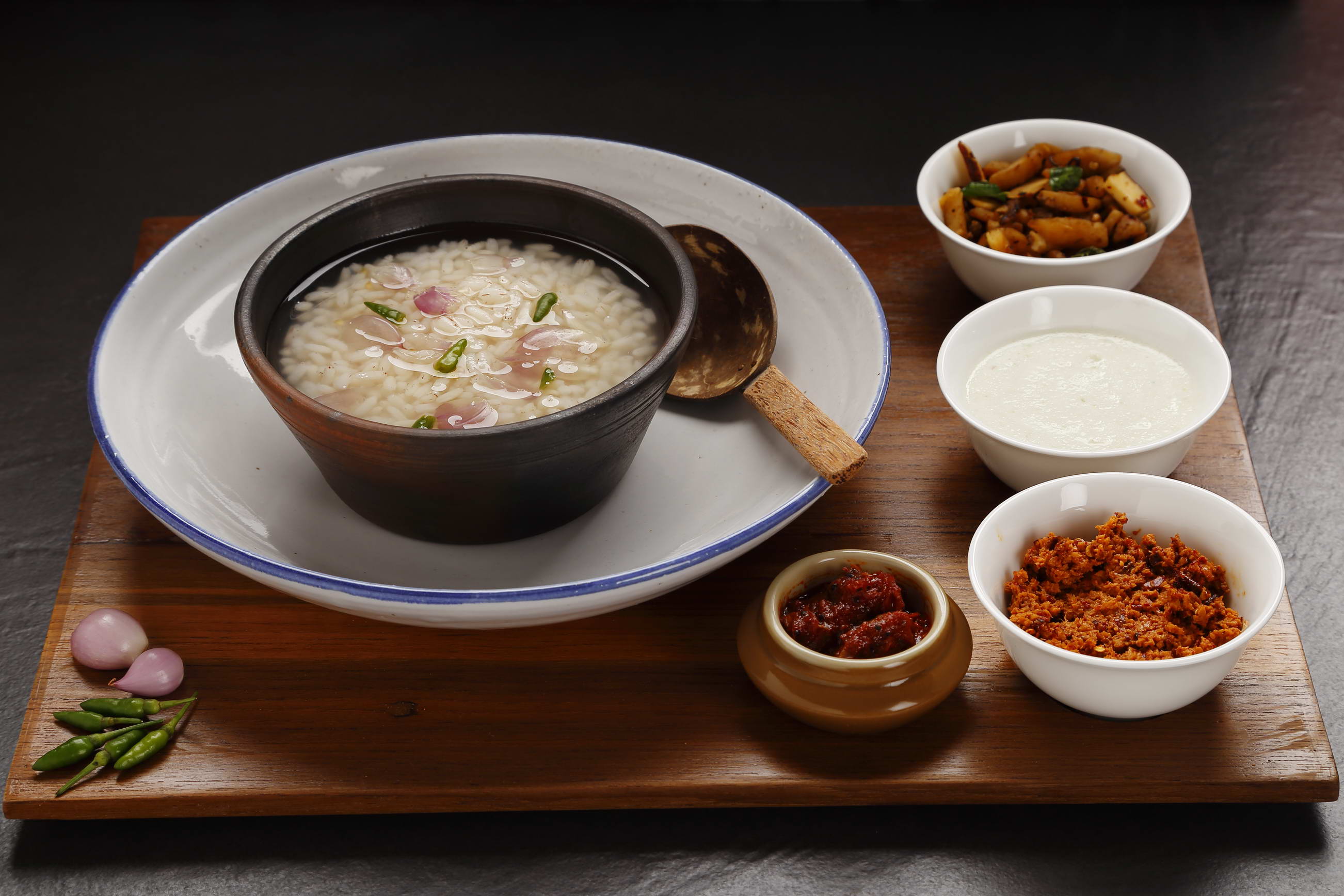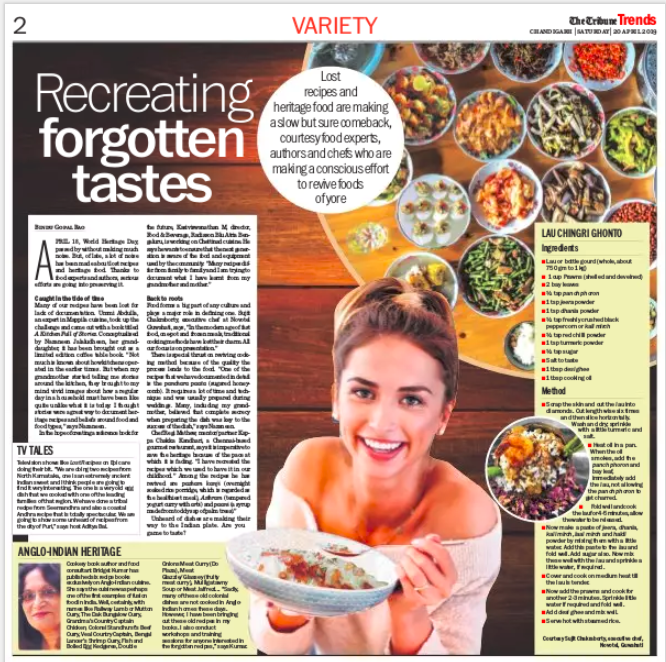Lost recipes and heritage food are making a slow but sure comeback courtesy food experts, authors and chefs who are making a conscious effort to revive food of yore.
Come April 18th and it is World Heritage Day and a great time to introspect on the intangible heritage of our country one of which is food. For a country like India where food changes every 50 kilometers, the heritage we have is vast. Naturally conservation of heritage food and age old recipes has become a key element of UNESCO’s intangible cultural heritage.
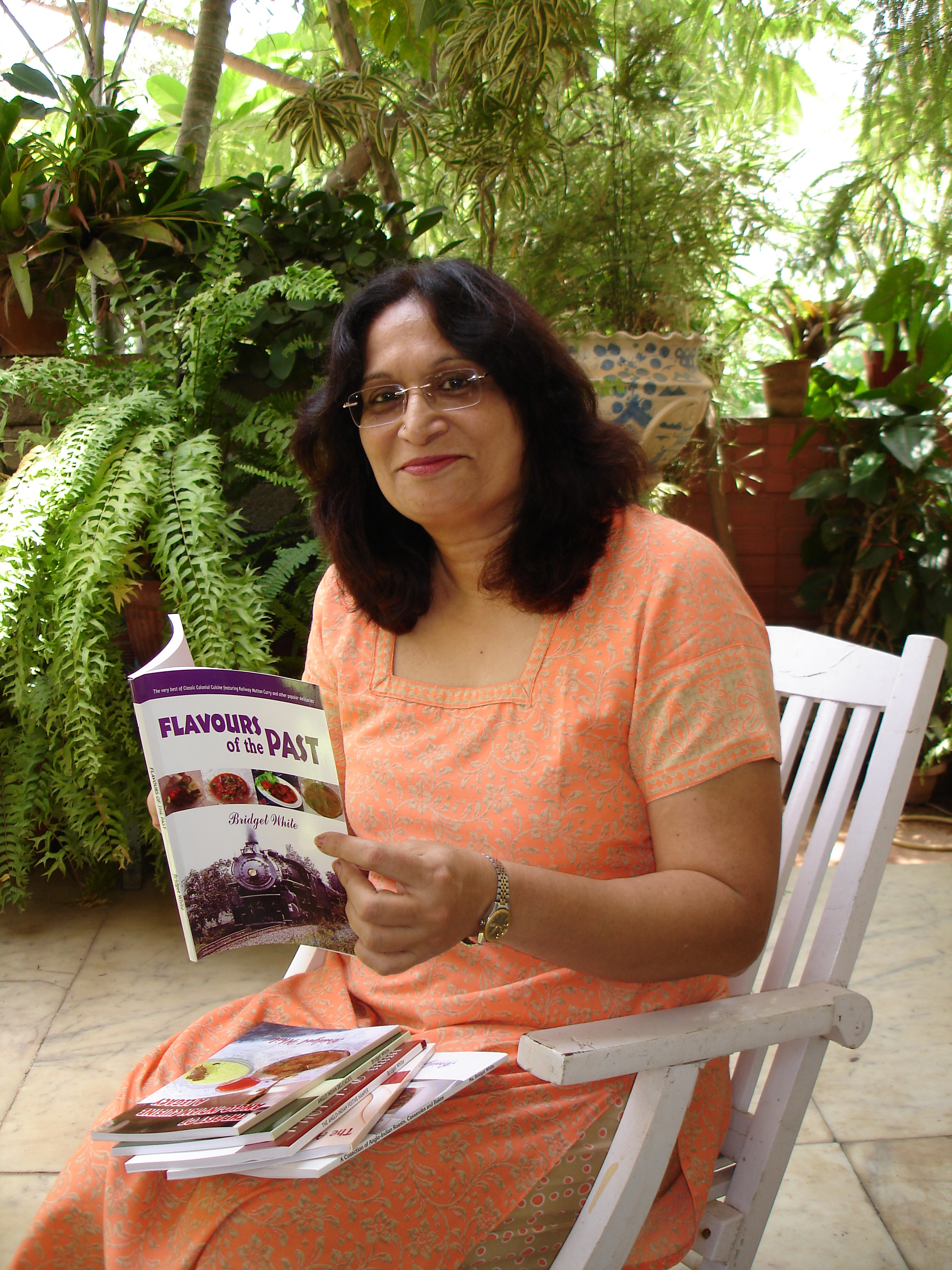
Revival Matters
Anglo-Indian Cuisine was perhaps one of the first examples of fusion food in India. Well with names like Railway Lamb or Mutton Curry, The Dak Bungalow Curry, Grandma’s Country Captain Chicken, Colonel Standhurst’s Beef Curry, Veal Country Captain, Bengal lancer’s Shrimp Curry, Fish and boiled egg Kedgeree, Double Onions Meat Curry (Do Piaza), Meat Glazzie / Glassey (Fruity meat curry), Mulligatawny Soup or Meat Jalfraze. “All these dishes were a direct throwback to the conditions prevailing at the time of the Raj and were famous in the early 20th century. Sadly many of these old Colonial dishes are not cooked in Anglo-Indian Homes these days as the cuisine has become more localized. However, I have been endeavoring to preserve this cuisine, by bringing out these old recipes in my recipe books and through my websites. I also conducted workshops and training sessions at big hospitality houses who try to show case the old forgotten recipes of the British Raj era,” says Bridget Kumar, Cookery Book Author and Food Consultant who has published six recipe books exclusively on Anglo-Indian cuisine.
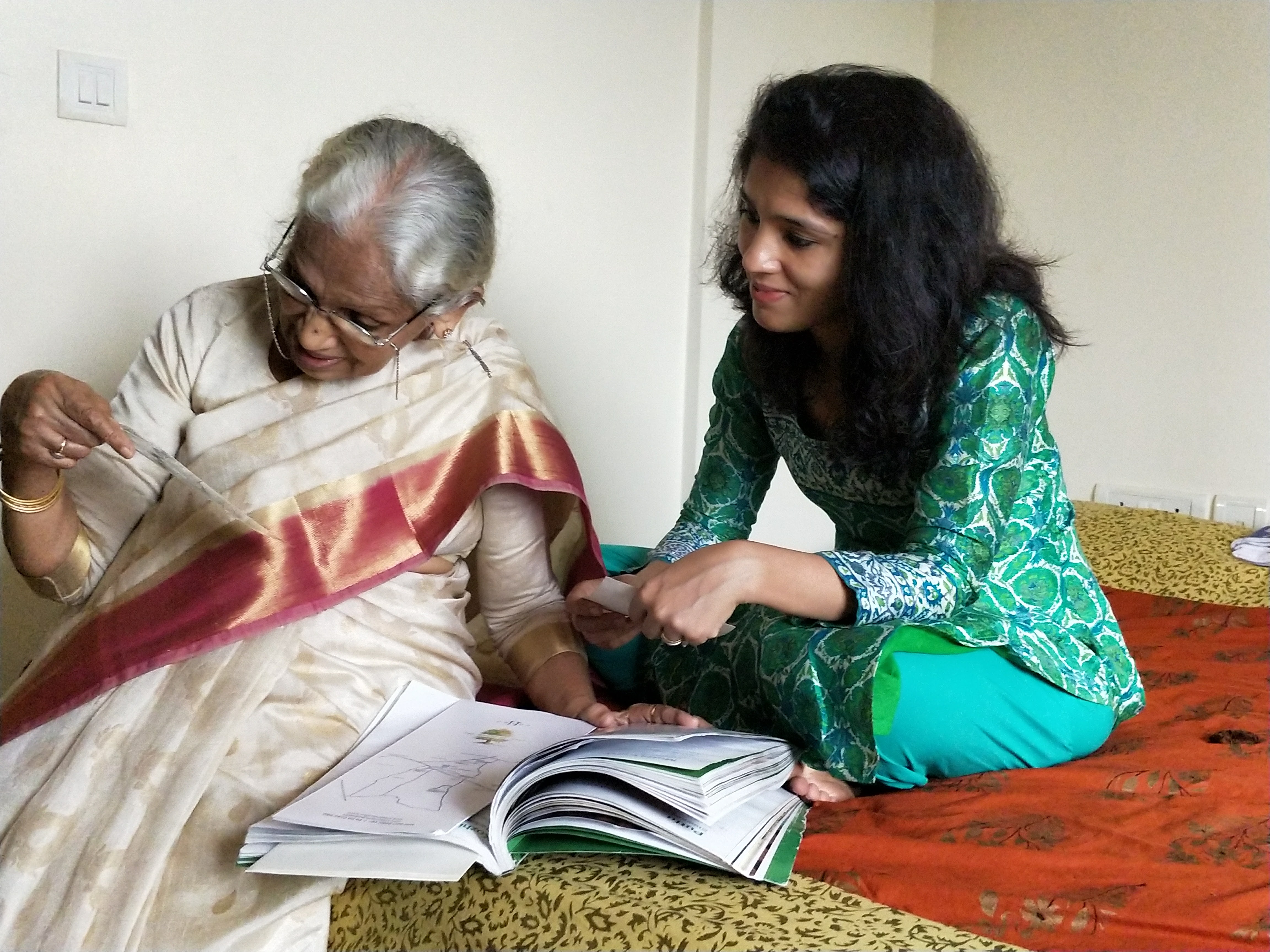
Documentation Tales
Many old recipes cooked by the older generation have been lost because they have not been documented. Take the case of a recent cookbook on Mappila cuisine called ‘A Kitchen Full Of Stories’ that has been brought out as a limited edition coffee table book written by Ummi Abdulla, an expert in Mappila cuisine and conceptualized by Nazaneen Jalaludheen, her granddaughter. The book evolved over seven years and Nazaneen avers, “a lot of about how kitchens operated in earlier times is not known anymore to us, when my grandmother started telling me stories around the kitchen, they brought to my mind vivid images about how a regular day in a household must have been like quite unlike what it is today. I thought stories were a great way to document heritage recipes and beliefs around food and food types.” Kasiviswanathan M, Director, Food & Beverage, Radisson Blu Atria Bengaluru who is working on a book on Chettinad cuisine says, “I am documenting everything to ensure that the next generation is aware of the food and equipment’s used by the Chettiar community. Again several recipes differ from family to family and I am trying to document what I have learnt to my grandmother and mother. Also this will be like some kind of reference in future.”
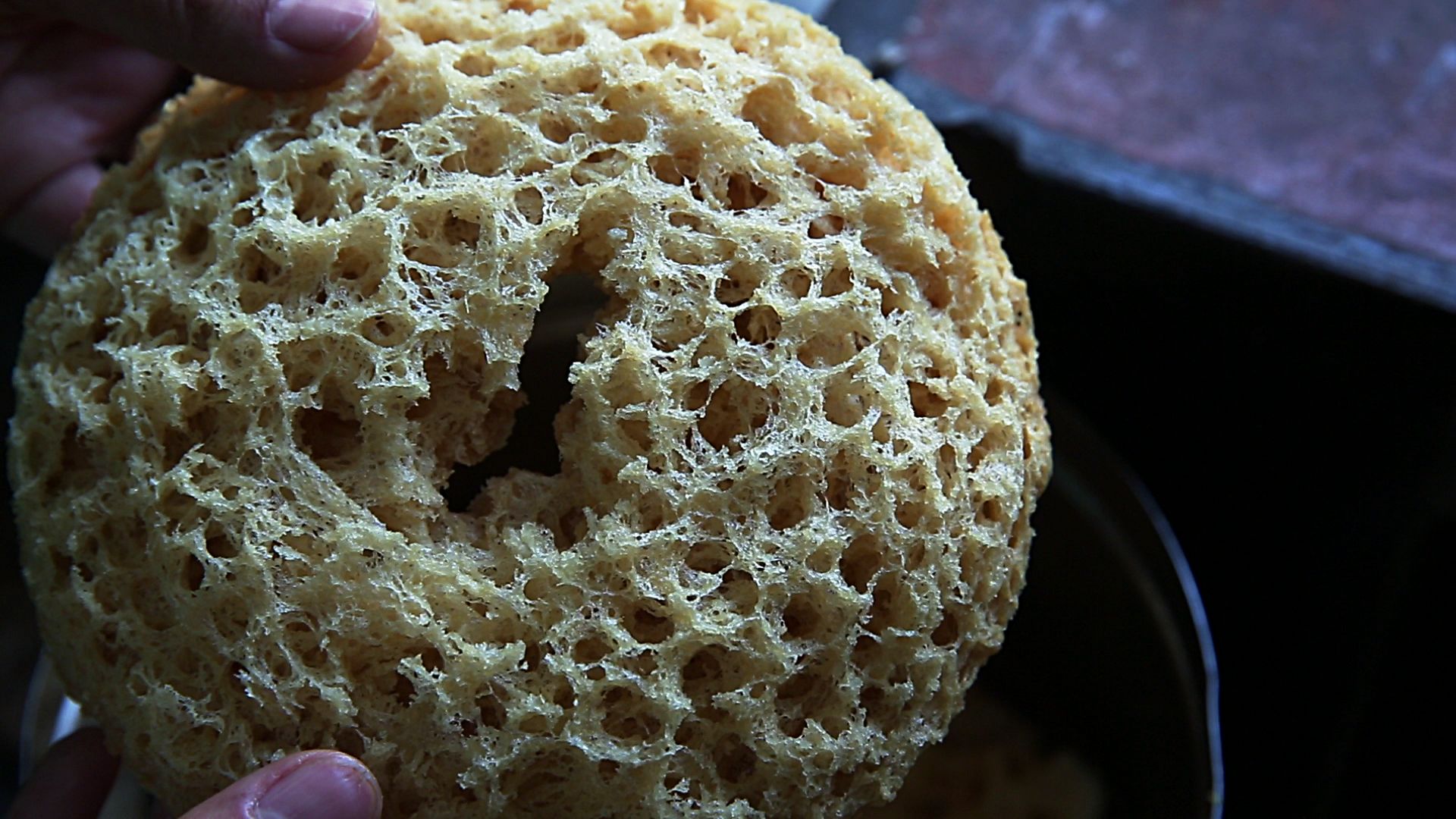
Contemporary Relevance
Food forms a big part of any culture plays a major role in defining a culture. It is therefore necessary and important to preserve the food traditions of the earlier generations. Heritage recipes in today’s times help us understand and connect with the way people live and the things people eat. Sujit Chakraborty, Executive Chef, Novotel Guwahati GS Road says, “in the modern age of fast food, one-pot and frozen meals one thing that has lost its charm is the traditional cooking method and the delicacies that they resulted in. Be it the kitchen of the Maharajas, the Nizams and the Mughals or the humble hearth, many of our heritage recipes have faded into oblivion. In today’s era the entire focus is on eye appeal and presentation and we tend to miss out on the originality and flavours of the dish. Reviving the lost recipes will surely help them earn the right place in our culinary culture but will also keep our generations attached to our roots.”

Food Fix
The recipes being revived as part of this effort includes several lost and forgotten recipes. The processes that go into preparing heritage dishes are as important as the dish itself as they make a great difference to the way the dish tastes. “One of the recipes that we (Ummi and I) have documented in detail is the Panchara Paata (sugared honeycomb). This dish requires a lot of time and technique and was usually prepared during weddings. Many, including my grandmother believed that complete secrecy when preparing the dish was key to the success of the dish. Another rather simple dish that seems to have gone out of fashion is the Mutton Kaya curry (a dish made from raw banana and mutton),” says Jalaludheen. Television shows are also doing their bit like Lost Recipes that are being revived as the part of the show through EPIC Channel. “We are doing two recipes from Northern Karnataka, one is extremely ancient for a traditional Indian sweet and I think people are really going to find it very interesting and the other one is a very old Egg dish which we cooked with one of the leading families of that region. We have done a tribal recipe from Seemandhra and also a coastal Andhra recipe which is totally spectacular. We are going to show such never seen before recipes that comes from the city of Puri,” says Aditya Bal, Host, Lost Recipes, Epic Channel. Chef Regi Mathew, Mentor/ Partner Kappa Chakka Kandhari a Chennai based gourmet restaurant says, “I mainly concentrate on recipes which are just going to disappear and most of the dishes which has a nostalgic connect. I have recreated the recipes which we used to have it in our childhood and has a nostalgic value. I have created this concept Kappa Chakka Kandhari as a ‘Neostalgic Gourmet Experience’. Pazham kanji [overnight soaked rice porridge- which is regarded as the healthiest meal], Asthram [tempered yogurt curry with arbi] and Paani [Paani is a syrup made from Toddy-Sap of Palm trees which used to be a dessert with banana earlier days] are some dishes available.” The Indian plate is all set to get a heritage makeover, are you game?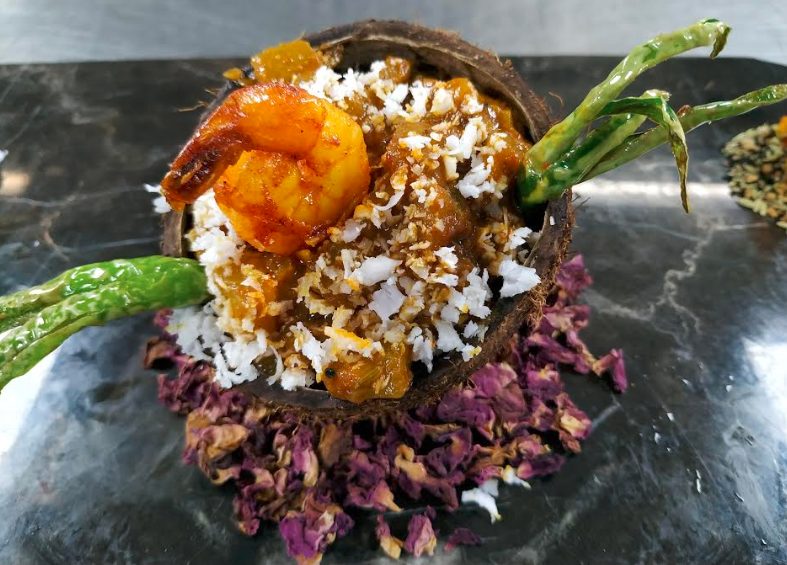
Here is a recipe from Lau Chingri Ghonto from Sujit Chakraborty, Executive Chef, Novotel Guwahati GS Road
Ingredients
- Lau or Bottle Gourd (whole- about 750 gms to 1 Kg)
- Prawns, shelled and deveined, 1 cup (Authentic Lau chingri is made with small and tiny shrimps)
- 2 no Bay Leaf
- ½ teaspoon Panch Phoron
- 1 Teaspoon Jeera Powder
- 1 Teaspoon Dhania Powder
- ½ Teaspoon Freshly crushed Black Peppercorn or Kali mirch
- ½ Teaspoon Red Chilli Powder
- 1 Teaspoon Turmeric Powder
- ½ Teaspoon Sugar
- Salt to Taste
- 1 Tablespoon Desi Ghee
- 1 Tablespoon Cooking Oil
Method
- Scrap the skin and cut the Lau into diamonds (Cut length wise six times and then slice horizontally).
- Wash and dry, sprinkle with little turmeric and salt.
- Heat oil in a pan, when the oil smokes add the Panch Phoron and Bay leaf, immediately add the Lau, not allowing the Panch phoron to get charred.
- Fold well and cook Lau for 4-5 minutes, allow the water to be released.
- Now make a paste of jeera, dhania, kali mirch, laal mirch and haldi powder by mixing them with little water. Add this paste to the lau and fold well. Add sugar also. Now mix these well with the Lau and if required sprinkle little water.
- Cover and cook in medium heat till the Lau is tender.
- Now add the Prawns and cook for another 2-3 minutes. Sprinkle little water if required and fold well.
- Add Desi Ghee and mix well. Check seasoning and adjust salt.
- Serve hot with steamed rice.
This story first appeared in The Tribune dated 20th April 2019 here:
